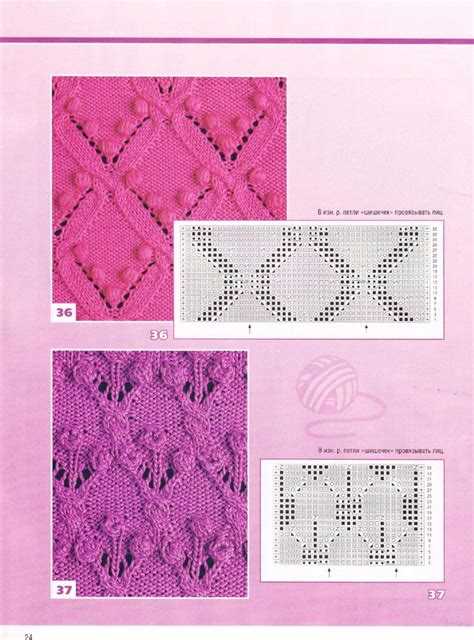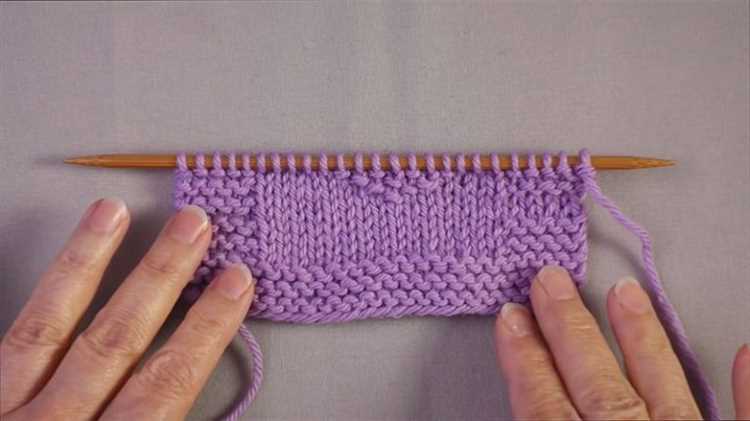Are you new to knitting? If so, you may have come across the term “STS”. If you’re wondering what STS stands for and how it relates to knitting, you’re in the right place. STS is an abbreviation for “stitches” in knitting. Stitches are the basic building blocks of any knitting project, and understanding how to count and keep track of your stitches is crucial for successful knitting.
In knitting, each loop on the needle represents a stitch. These stitches are created by “casting on”, which is the process of starting a new knitting project. As you continue knitting, you will work with these stitches by manipulating the loops on the needle using various knitting techniques such as knit stitch, purl stitch, and others. With each row you complete, you will be adding or decreasing stitches, depending on the pattern.
When a knitting pattern instructs you to “cast on X number of stitches” or “knit Y number of stitches”, it is referring to the total count of stitches you should have on your needle. This is where STS comes in handy. By keeping track of your stitches and counting them regularly, you can ensure that you are following the pattern correctly and that your project is turning out as intended.
Counting stitches can be done by eye or by physically counting each stitch on your needle. It’s important to double-check your stitch count at the end of each row or round to avoid any mistakes and to make sure you are on track. Understanding STS is an essential skill that every beginner knitter should learn, as it forms the foundation for many knitting techniques and patterns.
Whether you’re knitting a simple scarf or a complex sweater, knowing what STS means and how to count stitches is crucial for your success as a knitter. So, next time you come across the term “STS” in a knitting pattern, you’ll know exactly what it refers to and why it’s important to keep track of your stitches.
What is STS in Knitting?
Knitting is a popular crafting technique that involves creating fabric by interlocking loops of yarn. It requires a basic understanding of knitting terms and abbreviations, including STS.
STS stands for “stitches” in knitting. It is used to refer to the number of loops on your knitting needles. Each loop or stitch on the needle counts as one STS. The number of STS can vary depending on the knitting project and pattern.
When following a knitting pattern, the instructions often include the number of STS needed to complete a specific section or row. For example, a pattern may instruct you to cast on 50 STS to start a project. This means that you need to create 50 loops on your knitting needle before you begin knitting.
Understanding STS is essential for counting your stitches accurately and ensuring that your knitting project turns out the way you want it to. It helps you keep track of the number of stitches you need to work with and prevents mistakes.
When counting your stitches, it’s important to be meticulous and count each stitch carefully to avoid any errors. Keep count of your STS as you knit to ensure that you have the correct number of stitches throughout your project.
Additionally, knowing the number of STS in a pattern can help you estimate time and yarn requirements for a project. By calculating the number of STS and the gauge (how many STS fit in a specific measurement), you can determine how much yarn you will need to complete the project.
So, the next time you come across the term STS in a knitting pattern or instructions, remember that it simply refers to the number of stitches you need to work with. Happy knitting!
How to Count STS in Knitting?
Counting stitches (STS) is an essential skill in knitting, as it allows you to keep track of your progress and follow knitting patterns accurately. Here are step-by-step instructions on how to count stitches in knitting:
- Spread out your knitting: Lay your knitting project flat on a table or in your lap. This will make it easier to see the individual stitches.
- Identify the V-shaped stitches: Look closely at your knitting and identify the V-shaped stitches. Each V-shape represents one stitch.
- Count the stitches in a row: Start at one end of your knitting and follow a row of V-shaped stitches with your finger. As you touch each V-shaped stitch, count it out loud or keep a mental tally.
- Count the rows: If you need to count the number of rows, look for horizontal bars between the V-shaped stitches. Each bar represents one row.
- Use stitch markers: If you have a large number of stitches to count, consider placing stitch markers after every 10 or 20 stitches. This will help you keep track and make counting easier.
- Check your count: Once you have finished counting, it’s always a good idea to double-check your count to ensure accuracy. Mistakes in stitch count can affect the size and fit of your project.
Remember, practice makes perfect. As you become more familiar with knitting, counting stitches will become easier and more intuitive. Happy knitting!
Common Mistakes in Counting STS
Counting stitches (abbreviated as STS) correctly is crucial when you are knitting. It ensures that your project turns out the right size and shape, and helps you follow the pattern accurately. However, counting stitches can be tricky, especially for beginners. Here are some common mistakes to avoid when counting STS:
- Skipping stitches: One of the most common mistakes is accidentally skipping stitches while counting. When counting, make sure to count each stitch individually, including the ones at the beginning and end of the row.
- Counting the wrong side of the fabric: It is important to differentiate between the right side (RS) and wrong side (WS) of your knitting. Sometimes, beginners may count stitches on the wrong side, resulting in incorrect stitch counts. Always count stitches on the side of the fabric that is facing you.
- Miscounting yarn overs and decreases: Yarn overs and decreases can easily be missed or double-counted. Take your time and carefully count each yarn over and decrease, making sure they are included in your stitch count.
- Not counting selvage stitches: Selvage stitches, also known as edge stitches, are often included in knitting patterns to create clean edges. They are typically not counted as regular stitches in the pattern. Make sure to exclude selvage stitches from your stitch count.
- Confusing different stitch patterns: If your pattern includes different stitch patterns, it is important to keep track of each pattern’s stitch count separately. Mixing up the stitch counts can lead to errors in your knitting. Consider using stitch markers or a row tracker to help you stay organized.
- Not recounting after mistakes: If you make a mistake or need to rip back rows, always recount your stitches before continuing. This ensures that you start from the correct stitch count and can help you avoid further errors.
Avoiding these common mistakes will help you count stitches accurately and ensure a successful knitting project. Remember, practice makes perfect, and with time and experience, counting stitches will become easier and more intuitive.
Different Types of STS in Knitting
When knitting, there are various types of stitches (sts) that you can create to achieve different effects and patterns in your project. Here are some of the most common types of sts:
- Knit Stitch (K): The most basic stitch in knitting. It creates a smooth V-shaped stitch on the right side of the fabric.
- Purl Stitch (P): The reverse of the knit stitch. It creates a bumpy, horizontal stitch on the right side of the fabric.
- Stockinette Stitch (St st): This stitch pattern is achieved by alternating rows of knit and purl stitches. It creates a smooth and flat fabric with the knit stitches forming the right side and the purl stitches forming the wrong side.
- Garter Stitch (Gt st): This stitch pattern is achieved by knitting every stitch on every row. It creates a fabric with ridges on both sides and is reversible.
- Ribbing Stitch: Ribbing is often used for cuffs, collars, and hems. It is created by alternating knit and purl stitches in a specific sequence, such as K1, P1 or K2, P2, to create a stretchy and textured fabric.
- Seed Stitch: Seed stitch is a variation of ribbing stitch and is achieved by alternating knit and purl stitches within the same row. It creates a textured fabric with a scattered seed-like appearance.
- Moss Stitch: Moss stitch is another variation of ribbing stitch and is achieved by alternating knit and purl stitches, but with a different sequence than seed stitch. It creates a textured fabric with a more defined bumpy appearance.
- Cable Stitch: Cable stitches create twisted patterns in the fabric by crossing a set of stitches over another. This stitch pattern requires the use of a cable needle to help manipulate the stitches.
These are just a few examples of the many types of stitches that can be used in knitting. Experimenting with different stitch patterns can add variety and interest to your projects, allowing you to create unique and personalized knitted items.
How to Increase STS in Knitting?
Increasing stitches (STS) in knitting is a technique used to add more stitches to your project. This can be done to shape your work, create decorative patterns, or increase the width of your fabric. Here are a few methods you can use to increase stitches in knitting:
- Knit Front and Back (KFB): This is one of the most common methods used to increase stitches. To do this, you simply knit into the front loop of the stitch, but instead of dropping it off the needle, you knit into the back loop of the same stitch as well. This will create an extra stitch.
- Make One (M1): This method involves picking up the horizontal loop between stitches and knitting into it. There are various ways to make one, such as the make one away (M1A) or make one towards (M1T) methods. These methods create a new stitch without leaving a visible increase.
- Yarn Over (YO): This method creates an eyelet and is commonly used in lace knitting. To yarn over, you simply bring the yarn forward between the needles and then continue knitting the next stitch. On the following row, this yarn over will be worked as a regular stitch, creating an extra stitch.
- Cable Increase: This method is used in cable knitting when you want to increase stitches while maintaining the cable pattern. It involves manipulating the stitches and creating extra stitches within the cable itself.
When increasing stitches, it’s important to consider the pattern you are working on and follow the instructions provided. Some patterns may specify a specific method for increasing stitches, so make sure to read the pattern carefully.
Additionally, it’s important to maintain an even tension when increasing stitches to ensure that your fabric doesn’t pucker or become uneven. Practice and patience are key when learning how to increase stitches in knitting, so don’t be afraid to experiment and try different methods until you find the one that works best for you.
How to Decrease STS in Knitting?
Decreasing sts in knitting is an essential technique that allows you to shape your knitted fabric by reducing the number of stitches. There are several methods you can use to decrease sts, depending on the effect you want to achieve and the pattern you are following. Here are some common techniques:
1. Knit Two Together (k2tog): This is the most basic method of decreasing sts. To do this, simply insert your right needle into the next two stitches on your left needle, as if to knit, and then knit them together as one stitch.
2. Slip, Slip, Knit (ssk): This method creates a left-leaning decrease. Slip the next stitch as if to knit, slip the following stitch as if to purl, and then knit these two slipped stitches together through the back loop.
3. Purl Two Together (p2tog): This is the purl version of the k2tog decrease. Insert your right needle into the next two stitches on your left needle, as if to purl, and then purl them together as one stitch.
4. Slip, Slip, Purl (ssp): This method creates a left-leaning decrease on the purl side. Slip the next stitch as if to knit, slip the following stitch as if to purl, and then purl these two slipped stitches together through the back loop.
5. Central Double Decrease (CDD): This decrease is often used in lace knitting to create a symmetrical decrease. Slip the next two stitches together as if to knit, knit the next stitch, and then pass the two slipped stitches over the knit stitch.
6. S1, K1, psso (slip one, knit one, pass slipped stitch over): This method also creates a left-leaning decrease. Slip the next stitch as if to knit, knit the following stitch, and then lift the slipped stitch over the knit stitch and off the needle.
Remember to follow the instructions provided in your knitting pattern for the specific decrease method required. Practice these techniques and experiment with different patterns to master the art of decreasing sts in knitting.
FAQ:
What does STS stand for in knitting?
STS stands for stitches. It is a common abbreviation used in knitting patterns to indicate the number of stitches you should have at a certain point in your project.
How do I count stitches in knitting?
To count stitches in knitting, simply count the number of loops or bumps on your knitting needle. Each loop or bump represents one stitch. Make sure to count carefully to ensure accuracy.
Why is it important to count stitches in knitting?
Counting stitches in knitting is important for ensuring the accuracy and symmetry of your project. If you have too many or too few stitches, it can affect the overall look and fit of your finished piece.
Can I add or remove stitches in knitting?
Yes, you can add or remove stitches in knitting. This is often done to shape the fabric or create patterns. However, it is important to follow the instructions provided in your knitting pattern to ensure proper stitch count and maintain the integrity of the design.
What should I do if I lose count of stitches in knitting?
If you lose count of stitches in knitting, it can be helpful to use a stitch marker to mark your starting point after every few rows. This way, if you make a mistake or lose count, you can easily go back to the last stitch marker and start from there.


